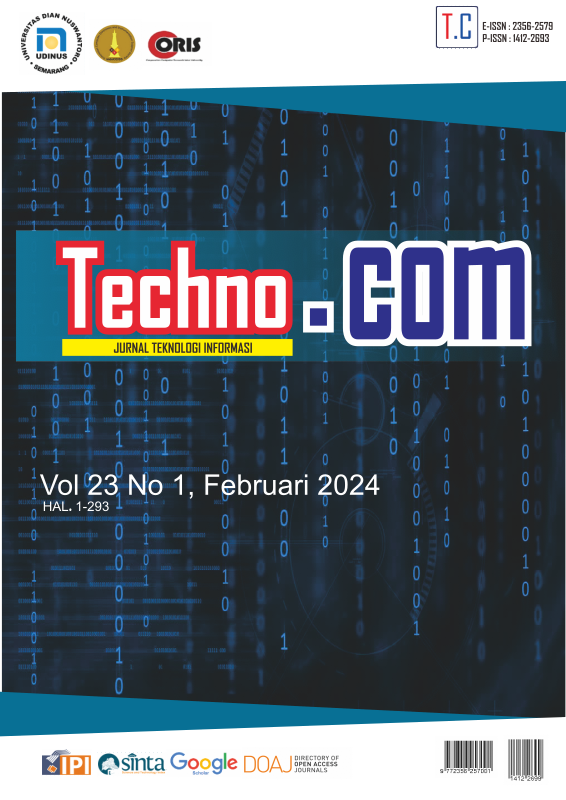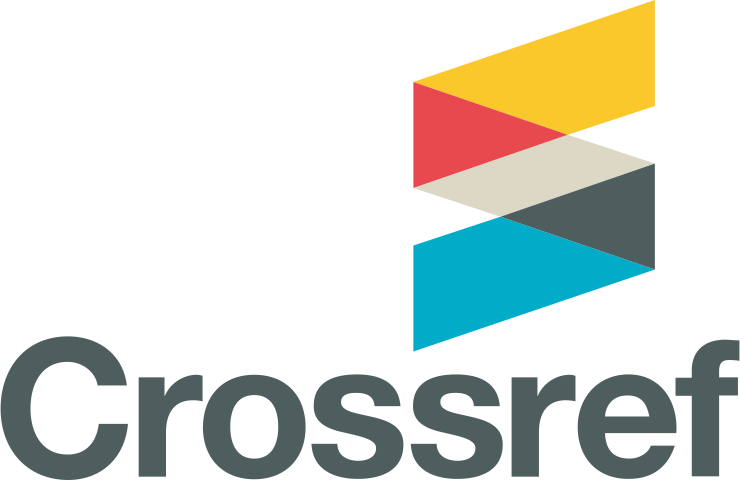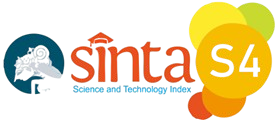Optimasi Centroid Awal Algoritma K-Medoids Menggunakan Particle Swarm Optimization Untuk Segmentasi Customer
DOI:
https://doi.org/10.62411/tc.v23i1.9516Keywords:
Customer segmentation, k-medoids, Particle Swarm Optimization, Davies-Bouldin IndexAbstract
Customer segmentation is an important strategy in a company, it affects good customer relationships which will result in increased profits. Grouping customers in data mining can use several algorithms, but K-Medoids is the right choice because it can reduce noise and outlier sensitivity. However, the selection of cluster centers is still random and has an effect on the results of clustering, so it is necessary to improve the k-medoids algorithm so that the resulting cluster value can be optimal. Particle Swarm Optimization is an optimization algorithm that is often used and has been proven to improve the results of a clustering. In this case, optimization using Particle Swarm Optimization (PSO) in the selection of the initial cluster center needs to be applied to the k-medoids algorithm so that the results of the cluster can be optimal. The results of the study showed the Davies-Bouldin Index (DBI) value for K-Medoids K 2 = 0.379, K 3 = 0.283, and K 4 = 0.593, while the DBI value PSO + K-Medoids K 2 = 0.088, K 3 = 0.226, and K4 = 0.363. The DBI value shows that PSO optimization on K-Medoids to determine the initial centroid is proven to improve the results of clustering than standard K-Medoids.References
B. E. Adiana, I. Soesanti and A. E. Permanasari, "Analisis Segmentasi Pelanggan Menggunakan Kombinasi Rfm Model dan Teknik Clustering," JUTEI (Jurnal Terapan Teknologi Informasi), pp. 23-32, 2018.
R. W. B. S. Berahmana, F. A. Mohammed and K. Chairuang, "Customer Segmentation Based on RFM Model Using K-Means, K-Medoids, and DBSCAN Methods," Lontar Komput. J. Ilm. Teknol. Inf., vol. 11, no. 1, p. 32–43, 2020.
P. Kotler, B. Molan, B. Sarwiji and K. Lane, Marketing Management, Thirteen Edition, Jakarta: Erlangga, 2009.
A. A. D. Sulistyawati and M. Sadikin, "Penerapan Algoritma K-Medoids Untuk Menentukan Segmentasi Pelanggan," SISTEMASI: Jurnal Sistem Informasi, vol. 10, no. 3, pp. 516-526, 2021.
D. Yu, L. Guojun, M. Guo and X. Liu, "An improved K-Medoids based on step increasing and optimizing medoids," Expert System with Applications, vol. 92, pp. 464-473, 2018.
S. K. Majhi and S. Biswal, "Optimal cluster analysis using hybrid K-Means and Ant Lion Optimizer," Karbala International Journal of Modern Science, vol. 4, no. 4, pp. 347-360, 2018.
C. Mageshkuma, S. Karthik and P. Arunachalam, "Hybrid metaheuristic algorithm for improving the efficiency of data clustering," Cluster Computing, 2018.
J. Kennedy and R. Eberhart, "Particle swarm optimization," In Proceedings of the 1995 IEEE International Conference on Neural Networks. IEEE Service Center, Piscataway, 1995.
C. P. Lekshmy and N. Abdul, "An Improved Clustering Algorithm based on K-Means and Harmony Search Optimization," IEEE, 2011.
D. T. Larose, Discovering Knowledge in Data: An Introduction to Data Mining, Wiley, 2005.
D. F. Pramesti, M. T. Furqon and C. Dewi, "Implementasi Metode K-Medoids Clustering Untuk Pengelompokan Data Potensi Kebakaran Hutan/Lahan Berdasarkan Persebaran Titik Panas (Hotspot)," Pengembangan Teknologi Informasi dan Ilmu Komputer, vol. 1, no. 9, pp. 723-732, 2017.
S. S. Rao, Engineering Optimization, Theory and Practice. fourth edition, New York: John Wiley & Sons, 2009.
D. L. Davies and D. W. Bouldin, "A Cluster Separation Measure," EEE Trans. Pattern Anal. Mach. Intell.,, vol. 1, no. 2A, 1979.
Downloads
Published
Issue
Section
License
License Terms
All articles published in Techno.COM Journal are licensed under the Creative Commons Attribution-NonCommercial 4.0 International (CC BY-NC 4.0). This means:
1. Attribution
Readers and users are free to:
-
Share – Copy and redistribute the material in any medium or format.
-
Adapt – Remix, transform, and build upon the material.
As long as proper credit is given to the original work by citing the author(s) and the journal.
2. Non-Commercial Use
-
The material cannot be used for commercial purposes.
-
Commercial use includes selling the content, using it in commercial advertising, or integrating it into products/services for profit.
3. Rights of Authors
-
Authors retain copyright and grant Techno.COM Journal the right to publish the article.
-
Authors can distribute their work (e.g., in institutional repositories or personal websites) with proper acknowledgment of the journal.
4. No Additional Restrictions
-
The journal cannot apply legal terms or technological measures that restrict others from using the material in ways allowed by the license.
5. Disclaimer
-
The journal is not responsible for how the published content is used by third parties.
-
The opinions expressed in the articles are solely those of the authors.
For more details, visit the Creative Commons License Page:
? https://creativecommons.org/licenses/by-nc/4.0/
















